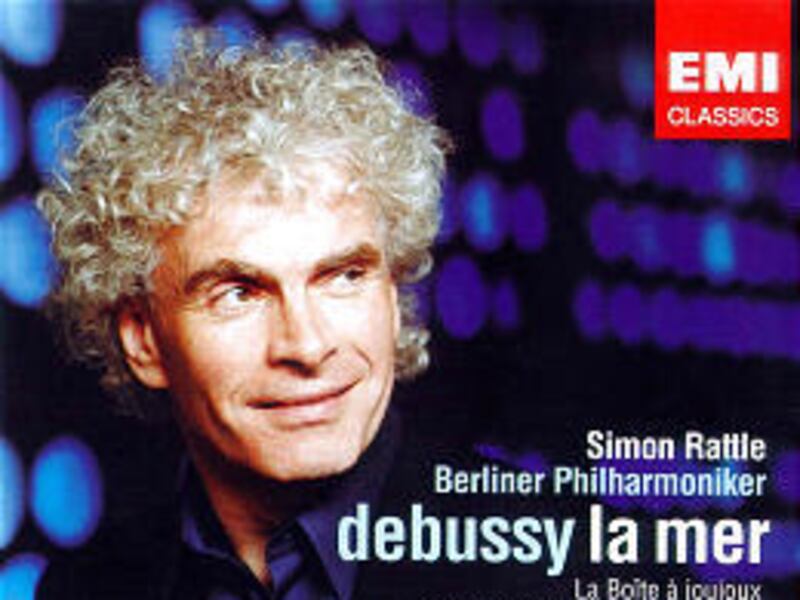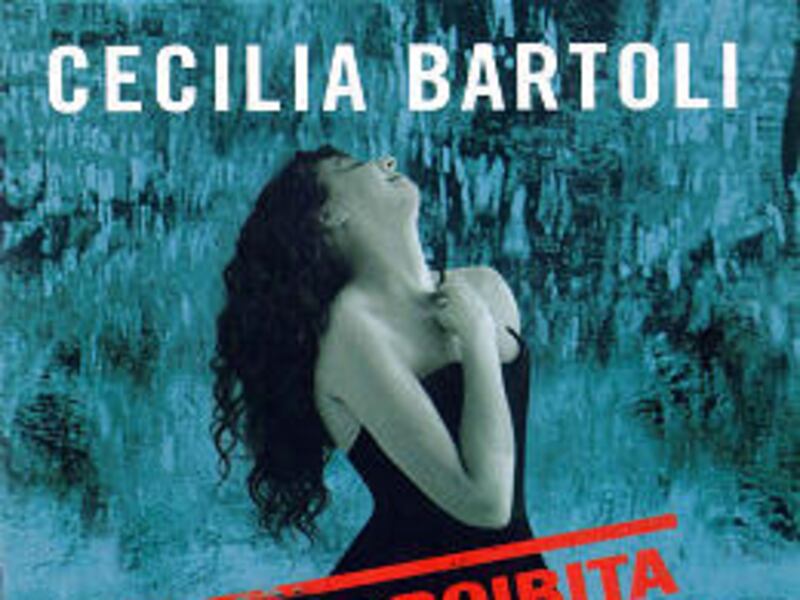SIMON RATTLE, CONDUCTOR, BERLIN PHILHARMONIC; Debussy: "La Mer" (EMI Classics) ****
CECILIA BARTOLI, MEZZO-SOPRANO, MARC MINKOWSKI, CONDUCTOR, LES MUSICIENS DU LOUVRE — GRENOBLE; "Opera Proibita" (Decca) ****
Simon Rattle's newest CD is arguably one of his finest recorded efforts with the Berlin Philharmonic. Up to now, Rattle has been primarily associated with the German repertoire, from Beethoven to Mahler. He has taken a giant artistic leap with this album devoted to Debussy, and it has paid off handsomely.
In the past, Rattle's recorded interpretations have occasionally left something to be desired in his divergence from the wishes of the composer, as expressed in the scores. However, with "Debussy: 'La Mer,' " Rattle captures the richness and subtleties of the music with a perceptiveness and sensitivity that shows he has much to offer as an interpreter of French music.
The Berlin Philharmonic plays luminously, with remarkable virtuosity and passion. Particularly striking is "Feux d'artifice," a brilliantly orchestrated arrangement (by Colin Matthews) of the piano prelude that captures the vivid radiance of the music. (Two other piano preludes are also on this album, "Ce qu'a vu le vent d'ouest" and "Feuilles mortes.")
Also included here is a little-known work, "La Boite a joujoux." Conceived as a children's ballet, Debussy never finished it. It was orchestrated by his friend Andre Caplet and premiered in 1919, a year after Debussy's death. The piece sparkles with an infectious charm, and Rattle easily captures the innocence of the music.
Of the other two works on the album, "La Mer" is given a remarkably dynamic and finely shaded reading, but it is the "Prelude a l'apres-midi d'un faune" that is the high point of the CD. Rattle's languid tempo brings out the sensuousness of the music forcefully. His interpretation is subtle and nuanced, and quite evocative.
In the early 1700s, opera was prohibited in Rome. That, however, didn't hinder composers working in Rome from writing secular vocal works. Under the veil of thinly disguised oratorios, composers wrote some of the most worldly and sensuous music of the baroque era.
Cecilia Bartoli's new CD, "Opera Proibita" ("Prohibited Opera"), dusts off some of the arias from these now forgotten works. Besides a number of pieces by Handel, the album also includes music by Alessandro Scarlatti and Antonio Caldara.
The arias are well-chosen. Most of them are virtuoso showpieces intended to display the singer's talents, and Bartoli does indeed shine. She sings these coloratura arias as only she can, with fabulously crafted phrases and stunning vocal pyrotechnics.
Mark Minkowski and Les Musiciens du Louvre accompany Bartoli with no less brilliance. This is a wonderful pairing, and one can only hope that these same artists will be reunited in the future.
E-mail: ereichel@desnews.com


